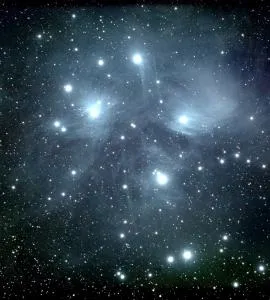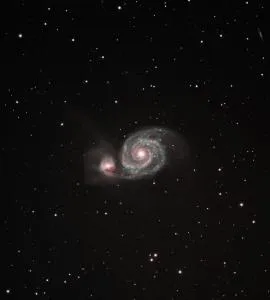NGC 5353 HCG 68 Hickson Group 68 Galaxies TEC 180 FL APO180FL

We explore the majestic NGC 5353 and its surrounding galaxy group, Hickson Group 68 (HCG 68) using our TEC 180 FL telescope. A rarely photographed object, we captured NGC 5353, its interaction with neighboring galaxies, and what these phenomena reveal about the universe's vast, intricate tapestry.
Welcome to the cosmic block party known as Hickson Compact Group 68, or HCG 68 for those who prefer a mouthful of Milky Way over alphabet soup. Nestled in the cosmic backstreets of the Canes Venatici constellation, HCG 68 is a bustling neighborhood of galaxies hanging out about 100 million light years away from our little blue planet.
Imagine this: five galaxy pals—NGC 5353, 5354, 5350, 5358, and 5355—cozying up in the universe, showing off their celestial charms. It's like watching a reality show with stars, but literally. Oh, and not far away, doing its own spiral dance, is NGC 5371. It’s not technically in the frame, but it’s definitely part of the clique, making the whole crew known as the Big Lick Group—yes, named after a salty spot in Virginia, because even galaxies appreciate a good lick of salt.
At the top of this star-studded group, we have the flashy Type A Seyfert galaxy, NGC 5350, sporting a super active galactic nucleus that's the life of the cosmic party. In the center, NGC 5353 and NGC 5354 are so close they’re practically finishing each other’s orbital sentences, potentially merging into a galactic mega-structure. Meanwhile, off to the side, NGC 5358 and 5355 are playing it cool, a bit fainter but still part of the gang.

SN2019ein SuperNova
The real star of the show? A supernova in NGC 5353—dubbed SN2019ein. It popped off as a bright, predominantly blue spectacle, not just any explosion, but a supernova of the Type Ia variety, shining at a snazzy magnitude of 13.2. These Type Ia supernovae are like the universal standard rulers—cosmic consistency in a universe full of surprises.
Capturing this image was like snagging an invite to the hottest party in the universe. Not only did I get a new favorite deep-sky object (DSO) to rave about, but I also photobombed a supernova! This group of galactic buddies isn’t just a treat for the telescope; it’s a call to action. It's time we give Paul Hickson his due and bring more eyes to these overlooked cosmic gatherings. Let’s make the universe a little smaller, one galaxy cluster at a time.

Date: April 30th, 2024
Telescope: TEC 180 FL F/7
Mount: RST-300
Camera: ZWO 6200MM, Temp= -20, Gain= 100 / ZWO filters RGB
Guider: ZWO ASI 174 mini as the guide camera
Controller: ASI Air
Acquisition:
180 second X 10 subs each of RGB.
2.25 hours total
Darks/Flats/Bias: (None)
Luminance: (None)
Processing: Pixinsight, Photoshop
Location: Missouri
Bortle Class Sky: 4
About the Author

Meet Richard Harris, a passionate and dedicated astronomer who embarked on a cosmic journey at the age of 11 and has been reaching for the stars ever since. Born with an innate curiosity for the universe. Richard's fascination with astronomy ignited when he first gazed up at the night sky and felt an indescribable connection to the cosmos and creation. As a younger lad, Richard spent countless hours poring over astronomy books, studying constellations, and learning about the celestial wonders that grace our skies. In 2001, Richard invented the HyperTune telescope process, which has grown into the standard for German equatorial telescope mount tuning across the globe. He is also the founder of ScopeTrader, a global resource helping to grow the hobby of astronomy which started in 2002, and the CEO of Moonbeam software company, started in 2008. When he's not taking photos of our universe, you can find him with family, playing guitar, or traveling.











